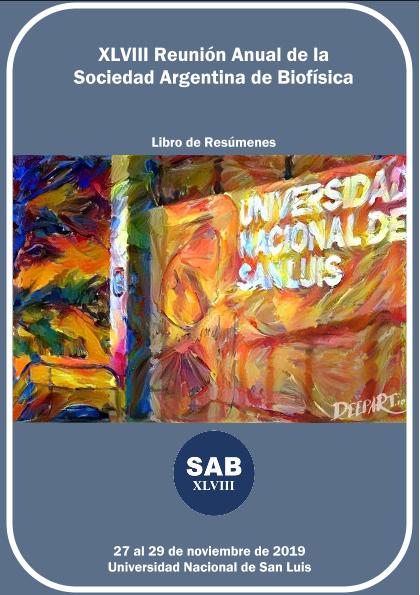Evento
Hydrogen bonds and water in steroid-containing phospholipidic membranes assessed by near infrared spectroscopy
Colaboradores:
Andujar, Sebastian Antonio

Tipo del evento:
Congreso
Nombre del evento:
XLVIII Reunión Anual de la Sociedad Argentina de Biofísica
Fecha del evento:
27/11/2019
Institución Organizadora:
Sociedad Argentina de Biofísica;
Título del Libro:
XLVIII Reunión Anual de la Sociedad Argentina de Biofísica
Editorial:
Sociedad Argentina de Biofísica
ISBN:
978-987-27591-7-9
Idioma:
Inglés
Clasificación temática:
Resumen
Near infrared spectroscopy (NIR) is useful to study the H-bonds network in water systems, which are sensitive to solutes. The less the number and/or the strength of H- bonds, the more the strength of the covalent O-H bonds of water. Hence, they vibrate and absorb radiation at higher frequencies. By taking advantage of this spectral shift water in DMPA membranes with and without one of two steroids, progesterone and 25- hydroxycholesterol, was assessed. Spectra of vesicles of DMPA and DMPA/steroid in MilliQ water (500 μM; 80:20 molar ratio for the steroid-containing samples) between 1100 and 2300 nm were acquired at 10 temperatures in the range 13-58 °C, with a path length of 1 mm. For understanding the tangled spectra, principal component analysis was applied to disclose subtle changes mirroring the alterations in the vibrational energy of the O-H bonds, as an indirect measure of the H-bond network. The analysis encompassed the first overtone of water (centered at 1450/1455 nm) representing signals of overlapping water and O-H stretching bands, as well as a limited portion of 1100-1300 nm. The shift to higher frequencies (i.e. higher energy) of the O-H vibration band with increasing temperatures or in the presence of 25-hydroxycholesterol is consistent with a strengthening of the O-H bonds caused by disruption/weakening of the H-bonds. The number of strongly H-bonded waters decreases whereas the number of weakly H-bonded waters increases. The observed shift agrees with reports about the distinct absorption of three states of water: waters having no -OH bonded, having one -OH group H-bonded and having two -OHs H-bonded. In contrast, DMPA and progesterone did not show significant effects on the H-bonds network. Findings concur with the lipid domain- promoting activity reported for 25-hydroxycholesterol (a cholesterol-like behavior) and with the slightly (or absent) lipid domain-disrupting activity of progesterone.
Palabras clave:
MEMBRANES
,
WATER
,
NEAR INFRARED SPECTROSCOPY
,
CHEMOMETRICS
Archivos asociados
Licencia
Identificadores
Colecciones
Eventos(INIBIBB)
Eventos de INST.DE INVEST.BIOQUIMICAS BAHIA BLANCA (I)
Eventos de INST.DE INVEST.BIOQUIMICAS BAHIA BLANCA (I)
Citación
Hydrogen bonds and water in steroid-containing phospholipidic membranes assessed by near infrared spectroscopy; XLVIII Reunión Anual de la Sociedad Argentina de Biofísica; San Luis; Argentina; 2019; 83-83
Compartir



